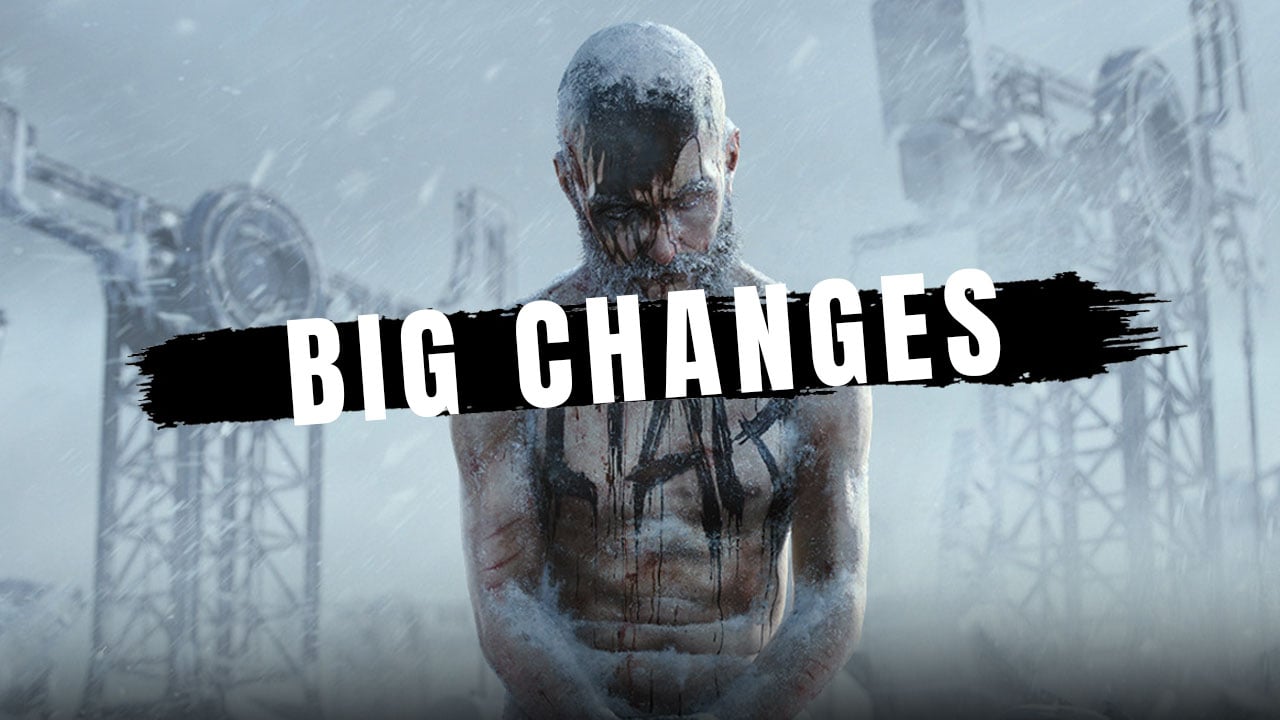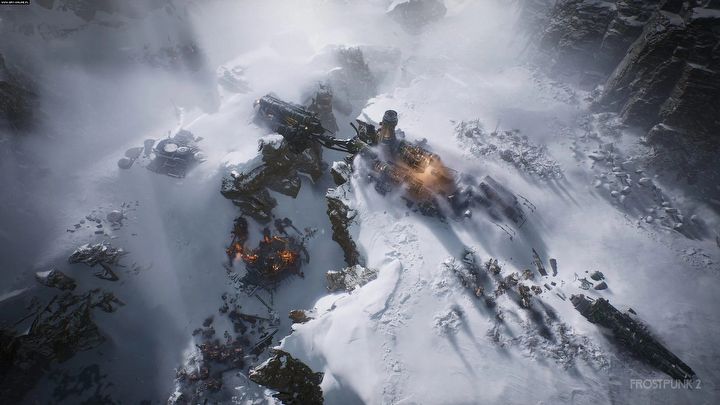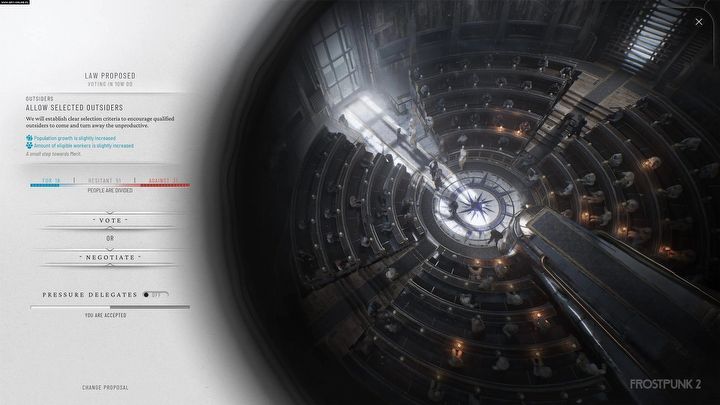Frostpunk 2 Hands-on Preview - Looks Like Perfect, Even More Gripping Sequel
Frostpunk 2 won't be your regular sequel offering more of the same thing. This is an ambitious follow up to an excellet game, giving us a chance of tackling the challenges facing a post-apocalyptic society on a much broader scale.

“Brace yourselves. Winter is coming!” While it remains to be seen what this year's winter will be like and what it will bring, we already know a bit about what to expect from the harsh winter in the Frostpunk universe. The second installment of the very warmly received, and at the same time very freezing game by the Polish studio 11 bit is an appealing combination of strategy and survival in the world of eternal and impenetrable ice. The game seems to be something more than a simple sequel featuring more of the same thing.
The developers speak plainly: the first installment was about the apocalypse, the will to survive in the face of the end of the world as it was known, and the catastrophic events that unfold afterwards. And it worked. 30 years have passed. Humanity has survived and is looking forward with hope to what comes next. The world of Frostpunk is now going through post-apocalypse phase as people try to build their future under the new set of conditions and rules. Various emergent social groups have their ideas, goals, and dreams. As players, we will face the challenge of creating a future, where civilization might thrive again.
Utopia builder and macro-management
I could test the latest innovations in Frostpunk 2 in the brand-new Utopia Builder mode, which is a sandbox mode without any storyline – of course, I should point out right away that a campaign with a storyline will also be available. The main difference that we'll notice in the sequel of Frostpunk is a tremendous emphasis on macro-management. We'll experience everything on a much larger scale and perspective. Time passes by weeks and years, rather than days, as was the case in the original. We'll build entire districts in a single move, instead of individual buildings.
The resources needed for survival will still be necessary, but once again, on a much larger scale in order to meet the needs of our entire society. The difficult choices we'll have to make again are now more about which faction's interests we support, rather than about whether we're righteous or heartless rulers. There will be more shades of gray and political nuances in the decisions as a consequence.
Changes in the sequel are well illustrated by the development tree, whose main stages aren't technologies but ideas for the best solutions to the biggest challenges the city faces. These can vary depending on the faction of their author and the intentions behind their introduction, which are based on knowledge and experience. Reconciling different visions and trying to navigate between them so that everyone is satisfied with something is one of the most interesting mechanics in Frostpunk 2.
Congress simulator
The system for making decisions and setting rules for governing the city reminded me a bit of a congress simulator. There was a proposal for a particular law, arguments for and against it, lobbying for a solution, and finally – voting on the idea. Participating in this was as absorbing as following a gripping political thriller, and I'm not surprised that for the developers from 11 bit, it's a feature they are most proud of.
The example I had a chance to observe concerned the regulation of child labor in the city and was the result of an earlier decision. Indeed, there was an issue of the need to improve the quality of the produced food. The Engineers faction, fixated on technology, wanted to invent chemical enrichers. The second group, the Foragers, who advocate survival exclusively on what’s currently available, argued for the use of natural fertilizers, causing diseases among the child laborers (yes, the game has them).
Some voices in the City Council suggested giving this decision to parents, while others called for a top-down law forcing families to send their children to school instead of work. There were also various detailed variants and additional suggestions that children should, for instance, be more involved in household chores, thereby freeing parents to work elsewhere.
In such a situation, we can rely on blind fate and vote right away, but what we can also do is we can try to put pressure on, or negotiate with, particular groups of interest. Each faction can pledge their votes in return for some benefits or fulfillments of certain requests. What's the best outcome? There’s none. All decisions have consequences and should be determined by our own vision of the city we want to build.
Hearts colder than frost
The vast network of interdependent choices becomes apparent in the later stage of the game. Unlike in the first installment of the series, sequel allows changing the laws we once established. After a few years, it turns out that even more radical branches have emerged from the existing factions, which hold more controversial and limited views. A minor difference regarding whether parents have the choice to send their children to school or keep them at home can be the final straw that tips the scales of peace versus riots.
So there: this is the premise of the upcoming Frostpunk 2. The premise that can be reminiscent of numerous adaptations of a zombie apocalypse. Surviving all threats and disasters isn't the greatest problem for humanity. In the end, we always reach a point where differences between people, disputes, and personal ambitions can hinder any development and lead to complete disruption of our society. An attempt to deal with this on the scale of a large city and numerous factions in Frostpunk 2 promises to be very interesting. Since the single problem, shown at an accelerated pace, has already got me so hyped, I can't wait to see what I'll have to deal with in the full version. This is going to be a really interesting sequel!


